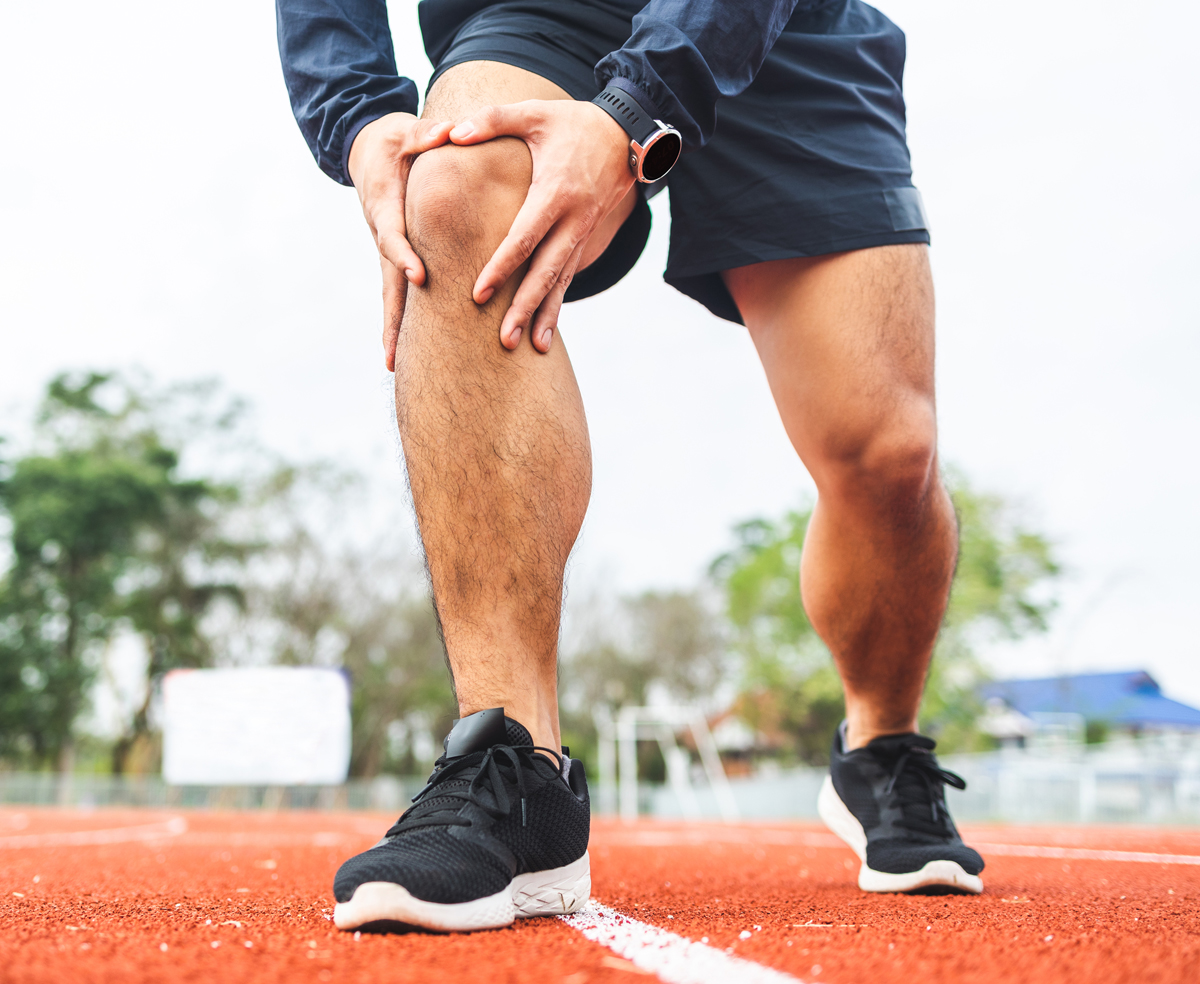Non-Surgical Management of ACL Tears in Physical Therapy: A Path to Recovery
By Dr. Frank J. Scerbo, PT, DPT ///
Tearing the Anterior Cruciate Ligament (ACL) is a common and challenging injury, particularly for athletes and active individuals. While surgery is often recommended for ACL injuries, non-surgical management through physical therapy can be an effective way to recover, especially for those who prefer a conservative approach. Physical therapy for ACL tears focuses on strengthening, stability, and gradually regaining movement, offering a comprehensive path to recovery without surgery.
Understanding ACL Tears and Non-Surgical Management
The ACL is one of the primary ligaments in the knee, providing stability and helping to control movement. Torn can lead to knee instability, pain, and reduced mobility. ACL injuries are classified from minor strains to complete tears. Non-surgical management may be suitable for:
• Partial Tears: Partial tears may heal effectively with therapy.
• Low-Demand Lifestyles: Those not involved in high-impact sports or heavy physical labor often benefit from conservative treatment.
• Patients Avoiding Surgery: Some patients prefer non-surgical treatment to avoid the risks or long recovery times associated with surgery.
For those opting out of surgery, physical therapy plays a central role in managing symptoms, restoring function, and building knee stability.
Key Components of Physical Therapy for ACL Tears
Physical therapy for ACL injuries is comprehensive, typically involving several stages to promote healing, enhance strength, and improve knee stability. Here are the primary components:
1. Pain and Inflammation Management
Effective management of pain and inflammation is the first step after an ACL tear. Reducing swelling and controlling pain allows patients to engage in physical therapy more effectively. Key methods include:
• Cryotherapy: Regular application of ice reduces swelling and alleviates pain, especially in the early days post-injury.
• Compression and Elevation: These techniques help control swelling and improve circulation in the affected area.
• Medication: Physical therapists may work with doctors to recommend over-the-counter pain relievers or anti-inflammatory drugs to manage pain.
Pain and inflammation management lays the groundwork for the rest of the recovery process by preparing the knee for therapeutic exercise.
2. Restoring Range of Motion (ROM)
After an ACL injury, the knee often becomes stiff, and the range of motion can be limited. Physical therapists prioritize gentle stretching and exercises that restore knee movement without compromising stability. Techniques include:
• Passive and Active ROM Exercises: Early on, therapists often guide patients through passive exercises to improve mobility. As progress is made, active exercises allow patients to move the knee more independently.
• Heel Slides and Wall Slides: These exercises help increase knee flexion and extension, essential for restoring movement.
• Patellar Mobility Exercises: Moving the kneecap gently helps prevent tightness and encourages proper knee function.
Regaining range of motion is crucial for knee function and prepares the joint for strengthening exercises later on.
3. Strengthening Surrounding Muscles
Once mobility improves, physical therapists focus on strengthening the muscles that support the knee, including:
• Quadriceps and Hamstring Strengthening: Strong quadriceps and hamstrings relieve pressure on the ACL and improve knee stability.
• Glute Activation Exercises: Glute strength is essential for balance and knee alignment, reducing stress on the knee joint.
• Core Stability Training: A strong core supports proper alignment and balance, making the knee less susceptible to instability.
Some effective exercises include:
• Straight Leg Raises: These strengthen the quadriceps without putting pressure on the knee.
• Bridges and Clamshells: Both exercises target the glutes and hips, helping to stabilize the knee from above.
• Wall Sits and Squats: As knee stability improves, these exercises add resistance for functional strength training.
Strengthening surrounding muscles not only helps the knee function better but also prepares it for daily activities and reduces the risk of future injury.
4. Proprioceptive and Balance Training
ACL injuries can disrupt proprioception, the body’s ability to sense joint position. Rebuilding proprioception is essential to prevent future injuries and achieve full functional recovery. Techniques used include:
• Balance Exercises: Simple balance exercises, like standing on one leg, improve knee stability.
• Use of Balance Boards or BOSU Balls: These devices introduce controlled instability, requiring patients to engage stabilizing muscles.
• Agility Drills: As patients progress, agility exercises like side-stepping or mini jumps help retrain the knee for dynamic movement.
By enhancing proprioception, patients can improve their knee’s response to sudden movements and better handle physical activities.
5. Functional and Sports-Specific Training
For patients who want to return to sports or high-impact activities, the final phase of physical therapy includes functional training that mimics the movements of their sport or activity. This phase might involve:
• Jumping and Landing Drills: These exercises help prepare the knee for impact, focusing on proper form to avoid further injury.
• Cutting and Pivoting Exercises: Practicing controlled pivots or side-to-side movements strengthen the knee’s response to sudden changes in direction.
• Gradual Return to Sport: This phase involves a slow reintroduction to the sport, often under the guidance of a physical therapist.
This stage is essential for athletes or individuals looking to regain confidence and control in high-demand activities.
Benefits and Considerations of Non-Surgical ACL Therapy
Physical therapy as a non-surgical option for ACL tears provides numerous benefits:
• Reduced Recovery Time: Avoiding surgery can shorten the recovery timeline and reduce downtime.
• Lower Risk: Non-surgical management avoids the risks of infection, complications from anesthesia, and other surgical risks.
• Functional Recovery: Physical therapy offers tools to strengthen and stabilize the knee, helping patients achieve a high level of function without surgery.
However, it’s worth noting that physical therapy may not be suitable for all cases, especially for those with complete tears who engage in intense physical activities. In some cases, surgery may still be recommended if conservative treatment does not provide adequate stability or pain relief.
How to Decide If Non-Surgical ACL Management Is Right for You
Choosing between surgery and physical therapy depends on various factors, including:
• Activity Level: Those involved in high-intensity sports may benefit more from surgery, especially for complete tears.
• Tear Severity: Minor or partial tears are more amenable to conservative treatment, whereas complete tears may require surgery for optimal results.
• Patient Goals: Individuals with lower physical demands or those wishing to avoid surgery may prefer non-surgical treatment.
A consultation with an orthopedic specialist and our physical therapists can provide guidance based on individual needs, lifestyle, and the extent of the injury.
Non-surgical management of ACL tears through physical therapy is a viable, effective treatment that promotes healing, stability, and a return to normal activities for many patients. By working through a structured physical therapy program like ours, patients can strengthen their knees, regain mobility, and build confidence in their stability without surgery. For those with an ACL injury, understanding the benefits of conservative treatment options is an important step toward recovery.
If you are considering non-surgical management for your ACL tear, contact us to discuss whether this option is right for you.


